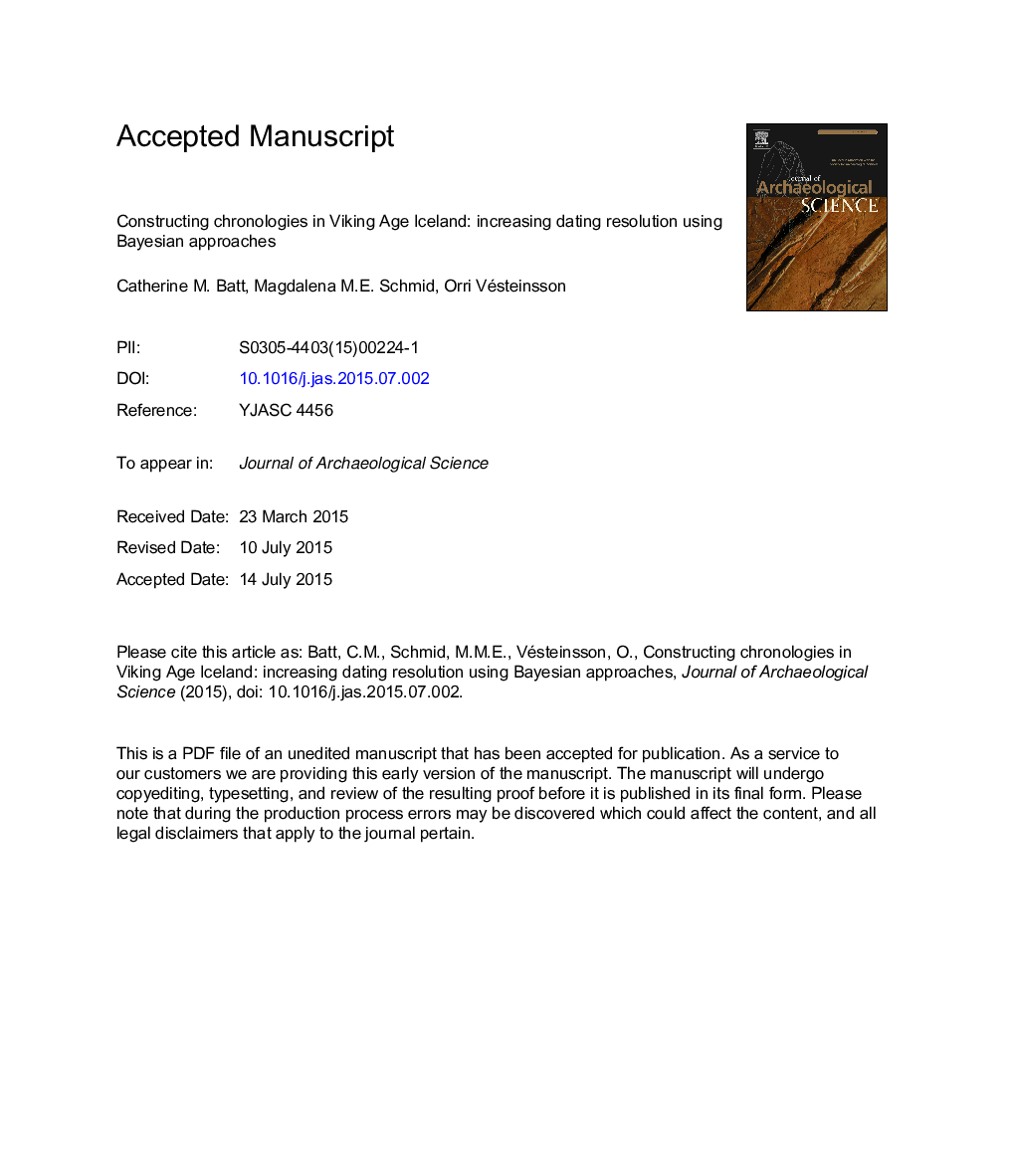| Article ID | Journal | Published Year | Pages | File Type |
|---|---|---|---|---|
| 7441732 | Journal of Archaeological Science | 2015 | 49 Pages |
Abstract
Settlement period sites in Iceland offer excellent opportunities to explore this approach, as many benefit from dated tephra layers and AMS radiocarbon dates. Whilst tephrochronology is widely used and can provide excellent chronological control, this method has limitations; the time span between tephra layers can be large and they are not always present. In order to investigate the improved precision available by integrating the scientific dates with the associated archaeological stratigraphy within a Bayesian framework, this research reanalyses the dating evidence from three recent large scale excavations of key Viking Age and medieval sites in Iceland; Aðalstræti, Hofstaðir and Sveigakot. The approach provides improved chronological precision for the dating of significant events within these sites, allowing a more nuanced understanding of occupation and abandonment. It also demonstrates the potential of incorporating dated typologies into chronological models and the use of models to propose sequences of activities where stratigraphic relationships are missing. Such outcomes have considerable potential in interpreting the archaeology of Iceland and can be applied more widely to sites with similar chronological constraints.
Related Topics
Physical Sciences and Engineering
Materials Science
Materials Science (General)
Authors
Catherine M. Batt, Magdalena M.E. Schmid, Orri Vésteinsson,
